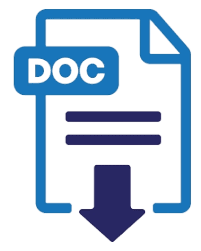VALUE CHAIN STRATEGY ANALYSIS ON COMPETITIVE ADVANTAGE IMPROVEMENT IN HEALTHCARE INDUSTRY: CASE OF RUMAH SAKIT KHUSUS BEDAH CINTA KASIH TZU CHI
Universitas Gunadarma
Indonesia
Universitas Gunadarma
Indonesia
Abstract
Cinta Kasih Tzu Chi Surgical Hospital or known as Rumah Sakit Khusus Bedah (RSKB) Cinta Kasih Tzu Chi is a hospital built based on humanism service. Referring to increasing of people awareness about the quality of health service and highly competitive on healthcare industry caused the hospital to improve its competitive advantage to get the market and handle the rivalry. Hence, the researcher had been motivated to conduct research the strategy of RSKB Cinta Kasih Tzu Chi with value chain activities approach supported with five forces porter and environmental analysis. Data collection methods are observation, interview, questionnaire, and literature review. The researcher arranged the result or response by method successive internal software to get the rating for each element of value chain activities. On primary activities of the value chain, it showed that implementation of post-service and point of service has been well applied and gave contribution in developing of competitive advantage, so do S2 on supporting activities. However, it requires improvement and development on pre-service for primary or collective structure and strategic resources for supporting activities.
Keywords
References
Barney, J.B., & Clark, D., N. (2007). Resources Based View Theory: Creating and Sustaining Competitive Advantage. New York: Oxford University Press Inc.
Burns-Crisholm, M., & Spivey C. (2012). “The ‘Cost’ of Medication Nonadherence.” Journal of the American Pharmacist Association, 52 (6), 823-826.
Hansen D. R., Mowen., & Maryanne. (2000). Management Accounting. (A Hermawa, Trans). Cincinatti: Ohio College Division, South-Western Pub.Co. (Original work published 1992).
Hill, C. W. L., & Jones, G. R. (2007). Strategies Management Theory: An Integrated Approach. Seventh Edition. New York: Houghton Mifflin Company.
Hunger J. D, & Wheelen, T. (2012). Strategic Management and Business policy: Toward Global Sustainability, 13th Edition. New York: Pearson Prentice Hall.
Jacob, B. A. (2005). “Accountability, Incentives and Behavior: The Impact of High-Stakes testing in the Chicago Public Schools”. Journal of Public Economics. (89), 761-796.
Jacob, George. (2006). Cooperative Learning: Theory, Principle, and Techniques, JF New Paradigm Education.
Kindangen, J. G., & Bahtiar. (2011). Penerapan Analisis Rantai Nilai dalam Akselerasi Pembangunan Pertanian di Sulawesi Utara. Bahan Seminar Inovasi Teknologi Pertanian Membangun Program Pembangunan Pertanian Propinsi Sulawesi Utara. Seminar Regional Inovasi Teknologi Pertanian, mendukung Program Pembangunan Pertanian Propinsi Sulawesi Utara. Sulawesi Utara: Balai Pengkajian Teknologi (BPTP).
Mcdonald, Robert E., & Nawasimhan S. (2004). “Technological Innovations in Hospitals: What Kind of Competitive Advantage Does Adaption Lead to?” International Journal of Technology Management. 10(10), 1-15
Mujiyana., S. L, & Mukhyi, M. A. (2012). “Pengaruh Penerapan Periklanan Di internet Dan Pemasaran Melalui E-mail Produk UMKM Di Wilayah Depok”. J@TI Undip, 7(3).
Porter, M. E. (1985). Competitive Advantage. (1), 1-15. New York: The Free Press.
Porter, M. E. (1996). What is Strategy? Harvard Businesss Review. New York: The Free Press.
Robbins, Stephen P. (2006). Perilaku Organisasi. Edisi ke sepuluh. Jakarta: PT. Indeks Kelompok Gramedia.
Robbins, Stephen P. (1994). Teori dan Organisasi: Struktur, Desain & Aplikasi. Edisi Ketiga. Jakarta: Arcan.
Sugiyono. (2007). Statistika untuk Penelitian. Bandung: Alfabeta.
Sugiyono. (2011). Metode Penelitian Kuantitatif, Kualitatif, dan R&D. Bandung: Alfabeta..
Swayne, L.E., Duncan, W.J., & Ginter P.M. (2006). Strategic Management in Health Care Organizations. United Kingdom: Blackwell Publishing
faculty of Economics

